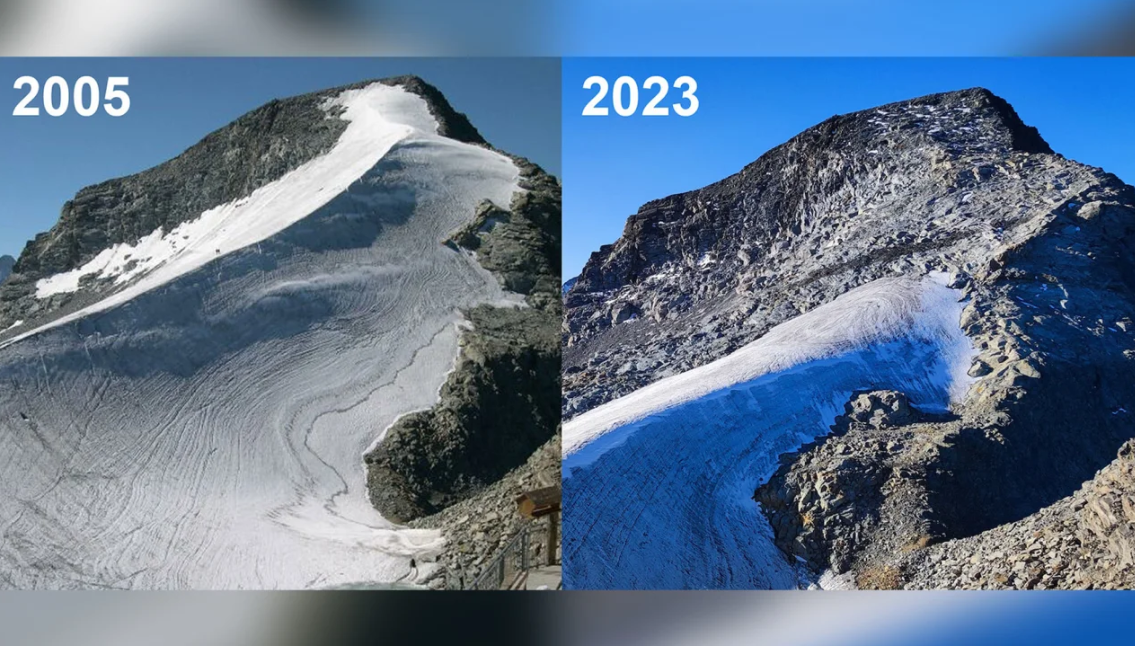
©Matthias Huss/GLAMOS
Vocabulary:
- unprecedented /uhn-PRES-i-den-tid/
- drought /drout/
- diminish /dih-MIN-ish/
- scarcity /SKAIR-si-tee/
- projection /pruh-JEK-shuhn/
[adjective] – never having happened or existed in the past
The company achieved an unprecedented level of success with its latest product launch.
[noun] – a long period when there is little or no rain
The farmers in the region struggled to cope with the prolonged drought.
[verb] – to reduce or be reduced in size or importance
The company’s profits began to diminish after the economic downturn.
[noun] – a situation in which something is not easy to find or get
The scarcity of water in the desert regions poses a serious challenge for local communities.
[noun] – a calculation or guess about the future based on information that you have
Based on current trends, the population projection for the city indicates a significant growth in the next decade.
Article reading:
Matthias Huss, head of the Swiss Glacier Monitoring Network, expresses astonishment, emphasizing that while glaciers have been losing mass for decades, this acceleration is unprecedented and attributed directly to climate change. The consequences are severe, with glacier tongues collapsing and smaller glaciers disappearing entirely. Even high-altitude regions, typically less susceptible, witnessed ice loss, notably in southern Valais and the Engadin valley at altitudes exceeding 3,200 meters. These losses, affecting glaciers nationwide, coincide with a winter of exceptionally low snowfall, reaching just 30% of the long-term average in late February. A summer of high temperatures led to early snowmelt. This rapid glacial retreat has significant implications, including increased geological instability and the tragic recovery of a missing mountaineer’s remains. While increased water runoff temporarily eases drought severity and replenishes reservoirs, this benefit is fleeting. As glaciers dwindle, their crucial role in providing water during times of need diminishes, exacerbating water scarcity during heatwaves. The long-term outlook is grim, with projections indicating further extensive shrinkage and retreat to the highest peaks. Urgent action remains crucial in the face of accelerating climate change. Recent studies suggest that even with ambitious climate targets, up to half of the world’s glaciers could vanish by the century’s end.
Discussion Questions:
- Have you ever visited a glacier or a region known for its glacial landscapes? If so, what was your experience like? If not, would you be interested in visiting a glacier or a region with significant glacial landscapes in the future? Why or why not?
- Have you ever engaged in discussions or activities related to climate change and its impact on natural environments, including glaciers? How did these conversations or actions influence your perspective on the urgency of addressing climate-related issues? If not, would you consider participating in discussions or activities related to climate change and its impact on natural environments, including glaciers, in the future? Why or why not?
- Do you believe that the accelerated ice loss from Switzerland’s glaciers is a cause for urgent concern regarding climate change?
- In light of the rapid glacial retreat in Switzerland, how might this phenomenon serve as a wake-up call for countries and global organizations to reevaluate their climate action strategies? What potential policy shifts or innovations could emerge from this urgency?
- Given the substantial implications of disappearing glaciers on water resources, agriculture, and tourism, what long-term strategies do you believe should be prioritized by affected regions to adapt to these changes and maintain sustainable livelihoods?
Summarization
Describe:
- coincide
- implication
- transformation
- severity
- mind-blowing